🎁 Free 30-day publishing fees on Pay-As-You-GO. Get 15% off when recruiting from the UserQ Panel, with code HELLO15
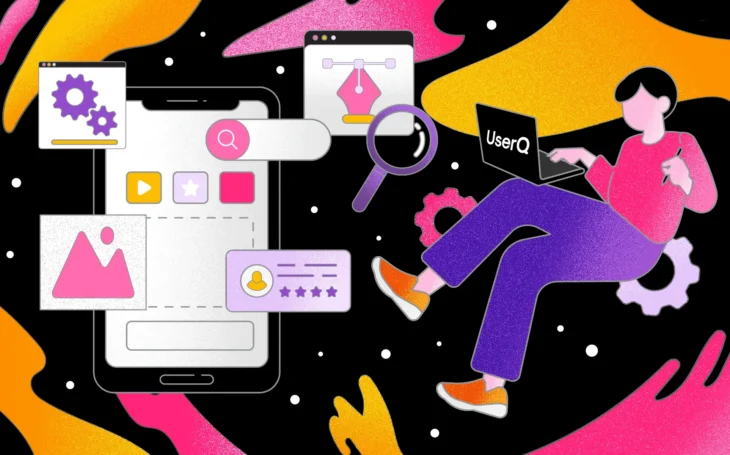
“End-users” is one word that can send chills to all segments of designers in every industry. For as long as one can remember, “What Users Want” has been changing time and again.
This frequency of changing aspirations, preferences, requirements, etc., is what makes UX experts and designers rethink their strategies and sometimes their whole existence. All of this is because their aim is to build user centered design.
Building a user centered design is crucial to ensure the end-users enjoy the product and that it’s usable. And it’s a curse even brands like Apple, Google, and Microsoft had to deal with at one point.
So, today, we are here with the things you need to learn and implement to build designs that are usable, memorable, and visually appealing.
Thought process | key principles of user-centered design (UCD)
“Human-centered design is a philosophy, not a precise set of methods, but one that assumes that innovation should start by getting close to users and observing their activities.”
Donald A. Norman
That was rightly said by Mr. Norman. Since UCD is a philosophy, it must be based on some key principles that dictate how UX designers understand their role and what they ought to build.
1. Showing empathy with your user’s needs and pains
Empathy is about stepping into your user’s shoes and observing the product from their perspective. Once you learn to understand your user’s pain points, desires, and motivations, you can create solutions that resonate with them.
However, to build this skill, you must rely on different methods to align your perspective and feelings with the target audience. Use surveys to gain this sort of knowledge, along with some ethnographic research.
2. Conduct user research to know them better
Do you remember the amount of research you did before buying a house? Why was that? Isn’t it because you need the house, location, and surroundings to be perfect?
Well, it’s the same for your end-users who also aspire to use a product that makes their life easier. To design a product that is invaluable to your users, you need to understand them by conducting interviews and surveys and hold focus group sessions.
Do this to understand what your users are doing and why they are doing it. For instance, if they drop off at a certain point while using your product, identify where they are dropping odd and why. Combine quantitative data with qualitative insights and create a continuous feedback loop system.
3. Conducting iterative testing to build better products
Anyone cannot build the perfect product in a single try. It’s always a process led by iterative testing, where you first build prototypes, test them early on with real users, and then build the final version.
Use a similar approach in your user centered design process where you first build wireframes, then clickable prototypes, and then the most viable product (MVP) before testing it with real users.
It’s also important to include feedback with continuous iteration, which ensures your product’s design aligns with the user’s expectations. Testing is crucial because what looks great on paper might not always work in the real world.
4. Build inclusive and accessible designs
User centered designs are meant to account for all types of users. In other words, your designs must include the usage challenges for users with different physical, cognitive, and sensory limitations.
Apple’s VoiceOver and AssistiveTouch a great examples of how inclusivity can be included in designing.
Designers need to adhere to the Web Content Accessibility Guidelines (WCAG) to create truly user centered designs.
Steps for implementing user centered design
Following the principles and best practices in user centered design allows you to create interfaces that deliver experience that prompts users to keep coming back for more. At the same time, 88% of your users won’t come back to your website or application after one bad experience.
According to the Interaction Design Foundation, there are four phases or steps in the user centered design process.
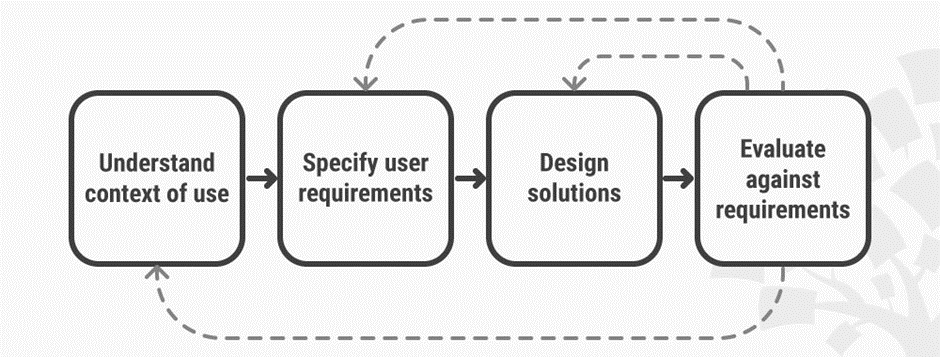
Source: Interaction-Design
1. Understand your users and the context of usage
Start by researching your users to understand how you will use your product. This is the most important phase in creating a user centered design, where you must identify your ideal users, their aspirations, motivations, challenges, and what drives them to make a decision. Use this knowledge to only build your product to further decipher how the users will interact with your product.
Focus on three things here;
- Devices they are using
- Environment of the interaction or engagement
- Emotional state during the interaction
Now, you must not only use this information to create tailored products but also market them accordingly. Unless you don’t share how your product will solve specific problems your users face, they won’t understand its potential.
What to focus on?
User personas: Personas help build a generalized representation of the users, and help designs have a clear picture of the user’s goals, skills, attitudes, lifestyle, etc.
User journey maps: These maps help you visualize how your users navigate through the product and assess their experience.
What methods to use?
Use qualitative research methods here, like surveys and questionnaires, and if you want authentic results, UserQ’s surveys are the way to go.
Netflix is the perfect real-world example in this context. Realizing the impact of personal recommendations, Netflix introduced an algorithm that studies what users are watching and where they are watching and then provides recommendations for maximum engagement.
2. Go deep into the analysis to specify user requirements
Now that you understand your users, it’s time to translate those to specific requirements and specific needs. Knowing this will make it clear how to build the design and what aspects your design must address.
This step is an in-depth analysis of the functional and non-functional requirements of your users.
- Functional requirements: These represent what your solution must do and help identify its features and functions. For instance, functional requirements for an eCommerce app include how easily users can add products to the cart, how quickly they can complete the checkout process, etc.
- Non-functional requirements: This implies how the solution must look and perform as it determines the quality of user experience. In other words, your eCommerce application must load quickly. A Statista study finds that the longer a user has to wait for the app to load, the quicker they will leave.
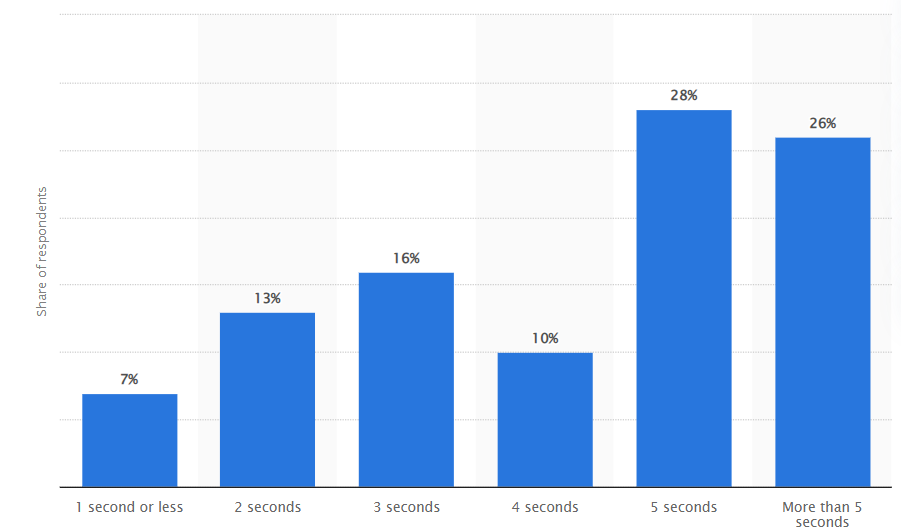
Source: Statista
So, knowing the functional and non-functional requirements is one of the key steps in user centered design.
What to focus on?
- User personas and stories: Personas represent fictional characters who you can use to ensure your design aligns with their needs. Every persona you create has its own unique story and perspective. Use these personas to build idea features and design.
- Scenarios: Build fictional or real-life inspired scenarios where your users interact with the product in different contexts. These scenarios are essential to envision your end-user’s journey and ensure your product can fulfill the end-user’s needs.
Spotify used the concept of user personas like “Frequent Traveler” to design features fit for travelers like offline download mode.
3. Create designs for your end users
The next step in the user centered design process is actually designing the interface how your users will like it. Since the designers are familiar with the user requirements, this phase focuses on the following;
- Creating user flows;
- Building the information architecture and site maps;
- Decide the interface color, icons, font, typography, content placement, language, tone, and images;
- Creating wireframes and prototypes;
- UX content;
- Accessibility features and their design.
All these decisions must be guided by what you know about the users, including the problems they are facing with the existing solutions.
Google maps used the user journey maps analysis to discover their target audience’s challenges and found how they needed access to maps in areas of poor connectivity. Hence, they introduced offline maps.
4. Evaluation and effectiveness of the design
This is the part where your designs are tested in real and make-shift environments to check whether they have met the goals set out. To evaluate, you can utilize the following;
- Usability testing: Gather feedback by observing users and how they interact with the prototype. As test users perform specific tasks, the design team must monitor their interactions and identify areas of confusion.
- Heuristic evaluation: Another way to catch usability issues is recognizing the heuristics. These are Neilsen’s thumb of rules, prompting designers to focus on consistency, feedback, and error prevention.
Ok, here are the things you need to evaluate through usability testing and heuristics evaluation.
- Does the design align with user requirements, and is the design able to fulfill the functional and non-functional requirements we discussed above?
- You can use UserQ to access a panel of real users to check user satisfaction scores, specifically the Net Promoter Score (NPS).
According to the findings, evaluate the design, identify the changes, and implement them until you achieve the goals set to represent the ideal design.
Usability testing is an important part of Apple iPhone development and has been instrumental in refining features like FaceID. Testing helped Apple identify how real users interacted with the feature in different lighting and angles.
Conclusion
User centered design is an iterative process that helps build engaging products and help achieve user satisfaction. You cannot and should not build or design a product without first understanding your users, and a user-centric design is the key to ensure your users are happy with your product.
At UserQ, we help businesses test their products against real users from a pre-vetted panel. We help you with testing so that you can make a high-impact product.
Related Post
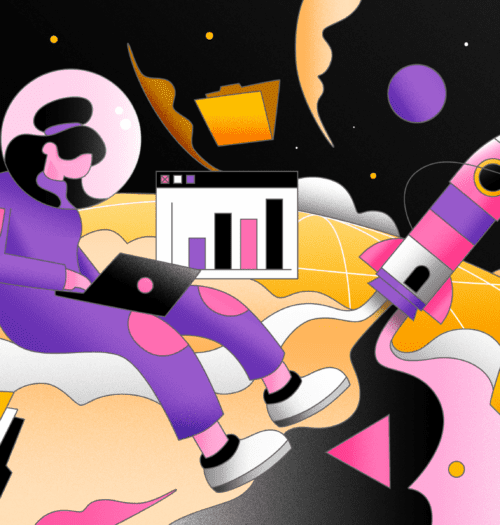
Best practices for conducting remote
In this guide, we’ll let you in on UserQ’s top tips and tricks to utilise our selection of remote user
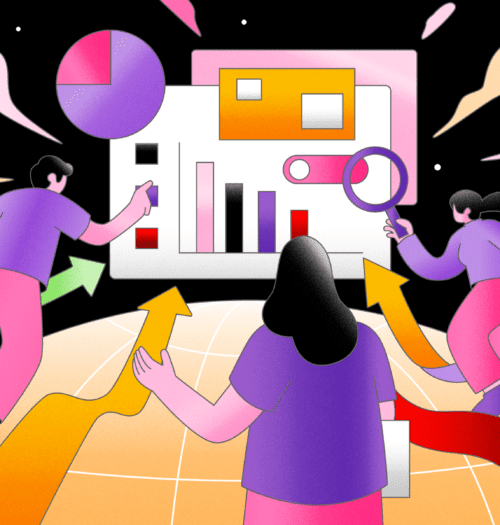
Start, Grow, Lead: A Guide
A career in which you can make a real difference to the everyday lives of customers and clients alike is
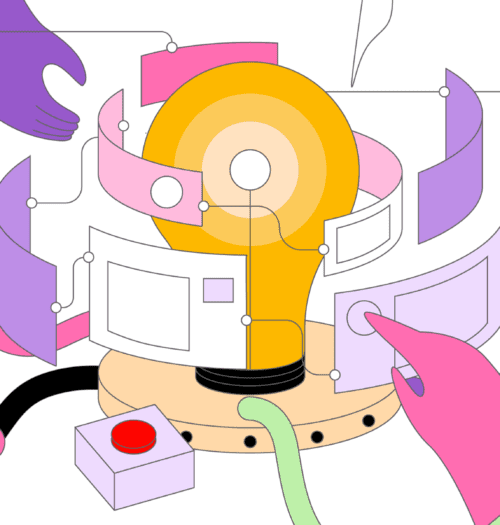
Validating your prototype FAQs: advice,
Ready to validate your prototype with our easy-to-use prototype testing tool? Well, we’ve got some must-hear advice and support to
Subscribe to our
product newsletter!
Receive emails about UserQ updates, new features,
offers and latest trends.


